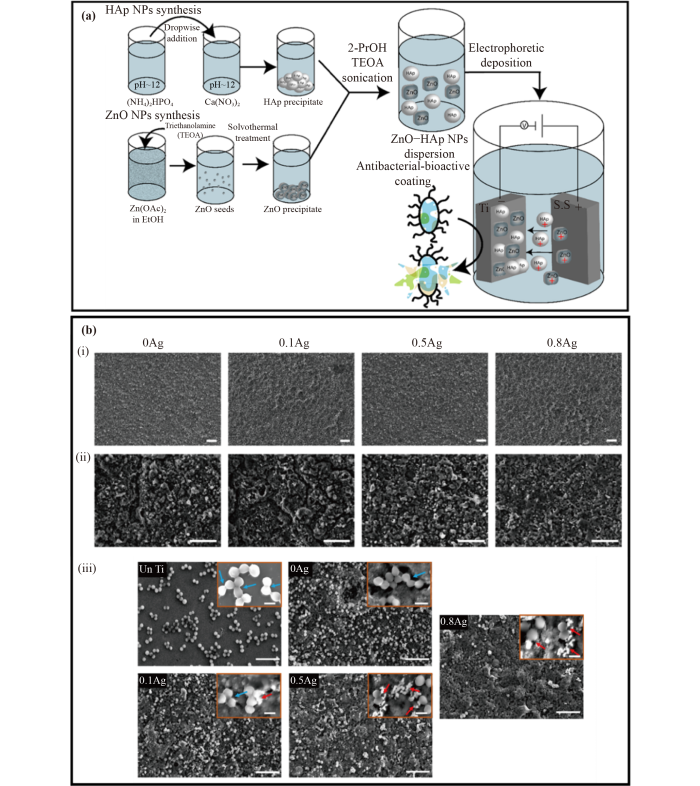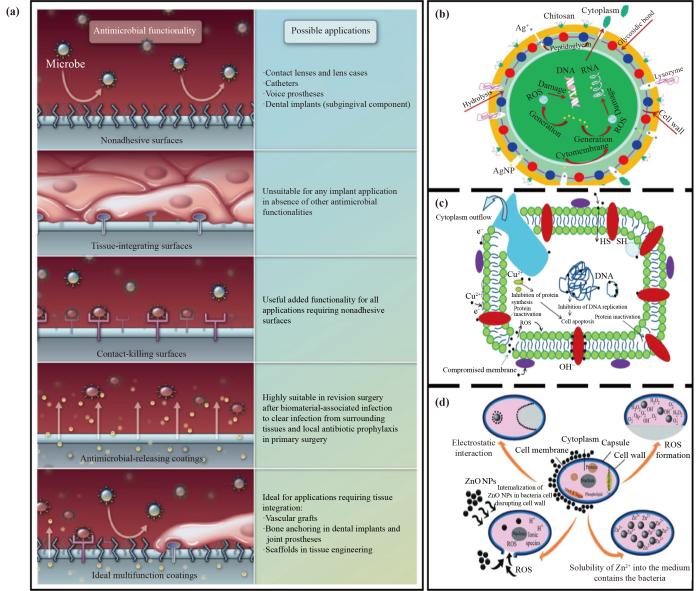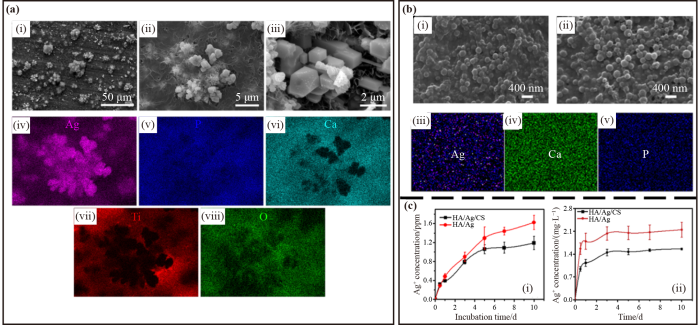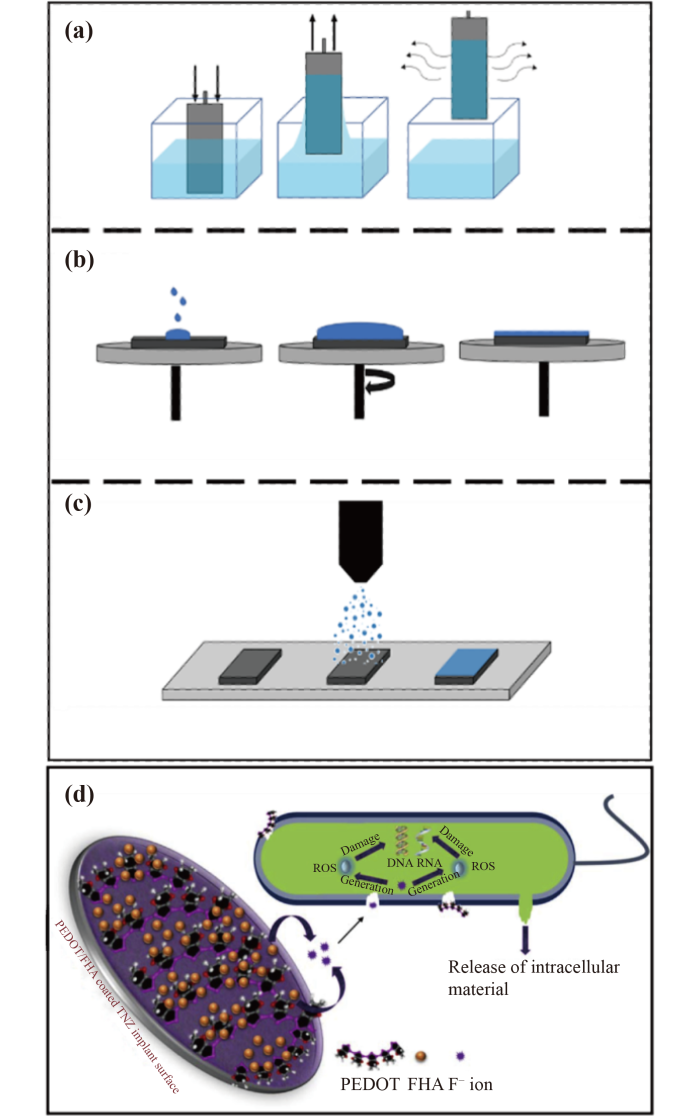Contents
Introduction
One-step method
Electrodeposition Sol-gel method Plasma spraying Selective laser melting and magnetron sputtering
Multi-step method
Conclusion
Disclosure of potential conflicts of interests
Acknowledgements
References
1 Introduction
2 One-step method
2.1 Electrodeposition

Fig.4 (a) The flow chart of electrochemical loading of ZnO. Reproduced with permission from Ref. [60]. (b) SEM images of the coatings made by PEO at scale bars of 10 μm (i) and 5 μm (ii); SEM images of the MRSA strain cultured on uncoated and coated Ti samples at the scale bar of 5 μm (inset: 1 μm) (iii). Reproduced with permission from Ref. [68]. |
2.2 Sol-gel method
2.3 Plasma spraying

Fig.7 (a) The schematic diagram of suspension plasma spraying and its different antibacterial abilities at different powers, and (b) the schematic diagram of the coating prepared by the LENSTM method and its release of Ag ions and its antibacterial effect. Reproduced with permission from Refs. [98‒99]. |
2.4 Selective laser melting and magnetron sputtering
3 Multi-step method
Tab.1 Advantages and disadvantages of common multi-step methods for preparing composite antibacterial HA coatings [125–127] |
| Method | Advantage | Disadvantage |
|---|---|---|
| Hydrogen bonding | Slowing down the release of metal antibacterial ions, and reducing toxic and side effects [125] | Limited choice of antimicrobials |
| Chemical bonding | Forming chemical bonds to coat firmly | Reduced repair ability of original bone and biocompatibility of HA |
| Physical adsorption | Easy to combine, easy to operate [126] | Weak binding ability, weak coating adhesion, and fast release rate of antibacterial substances [127] |









